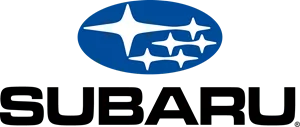Aligning employee training with business goals is crucial in today’s fast-paced and ever-evolving corporate landscape.
Organizations must ensure that their employees possess the necessary skills and that these skills directly support the business’s core objectives. Aligning employee training with business goals is key to driving growth, enhancing efficiency, and staying competitive in the market.
This blog presents a 10-step approach to assist companies in navigating this difficulty and matching staff training initiatives with more general company goals.
This method helps businesses create employee training plans closely related to their business objectives, guaranteeing sustainable development and a qualified workforce.
10 Steps for Aligning Employee Training with Business Goals
1. Define Business Objectives
Clearly defining the business objectives is the first step in matching staff training with corporate aims. Organizations have to know their desired direction and goals before any training program is developed.
These goals may be anything from raising customer satisfaction to boosting sales to bettering product quality to encouraging invention. Training courses should be made to enable staff members to support these objectives.
If your company wants to enter new markets, for example, you could have to teach your customer care team on managing a wider spectrum of client questions or your sales team on new market dynamics.
Your training plans will be designed on the basis of the corporate objectives, which guarantees that the learning opportunities are not only theoretical but also practical and fit for the demands of the company.
You can also use Coggno’s easy-to-use platform to deliver targeted, effective training.
2. Conduct a Skills Gap Analysis
Doing a skills gap analysis comes naturally following the definition of business objectives. This method involves determining the current competencies of staff members and matching them with the abilities needed to meet corporate goals. A comprehensive skills gap analysis will assist in identifying the areas that need the most training.
The knowledge acquired from this study will help you create customized training courses emphasizing closing these gaps.
Skills gap analysis helps companies prioritize the most critical training needs and spend resources effectively, whether that means enhancing soft skills like communication and teamwork, technical knowledge, or leadership abilities.
3. Set Strategic Training Goals
Once you know the talent shortages, you must create strategic training plans consistent with your company goals. These training and development objectives should be SMART—Specific, Measurable, Achievable, Realistic, and Timely.
If your company wants to raise customer happiness, for instance, your training objective could be to raise team members customer service skills by 25% in 6 months.
Employee training strategies objectives guarantee that the resources allocated for staff development are used wisely and immediately contribute to the corporate results by helping to concentrate efforts.
4. Engage Stakeholders
Effective training initiatives are not isolated. Key players inside the company must help and provide input for them. This includes employees personally, as well as top management and department executives.
Early involvement of stakeholders helps ensure that the training courses satisfy their expectations and complement the more general objectives of the business.
Beyond mere buy-in, engagement entails constant communication and teamwork to guarantee the program remains relevant and effective. Stakeholders can offer insightful analysis of what skills are most in need, how best training should be organized, and what success looks like.
Good involvement of stakeholders will also enable you to get the tools and funds required for the training projects.
Read More: How to Get Leadership Buy-In for Learning & Development (L&D)
5. Design Tailored Training Programs
Once stakeholders’ opinions have been gathered, it is time to create customized training courses covering the identified skill shortages. Rarely do one-size-fits-all solutions apply in the varied companies of today.
Customizing the training to fit the particular requirements of various teams and positions helps companies to guarantee that staff members get the most pertinent and successful learning opportunities.
While creating training and development initiatives, consider the particular difficulties and opportunities present in every division. For instance, whilst the IT team could need greater in-depth knowledge of cybersecurity measures, a marketing team might need instruction in digital advertising methods.
Customizing the content helps companies to optimize the value of their training initiatives and ensure they are aligning employee training with business goals.
With Coggno’s industry-leading LMS, you can create customized training programs that drive performance and success. Start Training Today!
6. Communicate Purpose and Expectations
Employees must clearly know the goals of the training and what is expected of them if such programs are to be successful. Effective communication of the training and development objectives enables staff members to recognize the link between their growth and corporate goals.
Good communication also makes staff members driven to participate in the training program.
Employees who match the program with goals for both personal and professional growth are more likely to actively use what they have acquired. Establishing performance standards and post-training application guarantees also a clear roadmap for success.
7. Implement Training Strategically
Strategic implementation of the training programs follows from their design and expectations setting. Crucially in this phase are timing and delivery techniques.
Online training, in-person seminars, or a hybrid approach—whatever the employee training strategies—the execution should fit the operational goals and work schedules of the business.
Strategic implementation also entails matching training programs with the times of maximum production of the company.
For example, training should be started ahead of time if a company is set to introduce a new product to guarantee staff members are ready to face fresh problems. Well-planned and executed training reduces disruption and helps in aligning employee training with business goals.
8. Promote Continuous Learning
Maintaining long-term success depends on encouraging an always-learning culture inside the company. Training should be understood as a continuous path of professional development rather than as a one-time occurrence.
Encouragement of lifelong learning can take the form of providing staff members with opportunities for more education, industry conference attendance, or just advice to keep current with fresh developments and innovations in their sector.
This kind of thinking guarantees that staff members are always acquiring skills directly related to both present and future corporate goals and helps them remain involved.
Establishing a culture of lifelong learning also helps the workforce be ready for forthcoming challenges, therefore aligning employee training with business goals and promoting adaptation.
9. Measure and Evaluate
Making sure training programs are aligning employee training with business goals depends on their effectiveness being measured and evaluated. This transcends basic measures of student completion rates or satisfaction.
The true worth of a training program is found in how it affects corporate results, including more customer satisfaction, more innovation, or better productivity.
Companies should assess how well the acquired abilities from training are used in the actual world. Performance evaluations, management comments, or key performance indicator (KPIs) tracking help to do this.
Through constant assessment of the training initiatives, companies can find areas needing development and guarantee that their staff training plans still fit changing corporate objectives.
10. Iterate and Improve
Courses for training shouldn’t be fixed either. Employee training should change with the times as corporate requirements do.
Reviewing the results of your training initiatives comes first; then, you should iterate and enhance. Using feedback and performance statistics, you can change the training materials, delivery techniques, or even the strategic goals themselves.
Such iterative employee training strategies help in aligning employee training with business goals and guarantee that the training program stays pertinent. Maintaining the staff engaged and ready with the skills required to propel corporate success depends on constant improvement.
How Often Does Aligning Training With Business Objectives Present Difficulties?
1. Lack of Clear Objectives
Lack of clear objectives is one of the main difficulties companies have in aligning employee training with business goals. It is challenging to create training courses with a clear influence on company performance without carefully defined goals.
Before starting any business-aligned training programs, companies must make sure their corporate goals are clear, reasonable, and shared with all of their stakeholders.
2. Siloed Departments
Siloed departments inside companies present another difficulty. Separating departments makes it difficult in aligning employee training with business goals.
Cooperation is crucial to make sure that training programs not only meet departmental demands but also encourage objectives as a whole, therefore helping corporate training alignment.
3. Inadequate Needs Assessments
A poor needs assessment could result in ineffective training courses failing to solve the real skill shortages in the company.
Training can either be useless or repetitive without a comprehensive needs assessment. Before funding any training programs, companies have to spend time correctly evaluating the competencies required to fulfill corporate goals.
4. Stakeholder Engagement
Two main obstacles concerning the involvement of stakeholders are:
- Certain stakeholders could not see the long-term benefits of training programs and are eager for fast outcomes.
- Departments of training and development (L&D) must present themselves as main drivers of corporate success instead of only attending to ad hoc needs.
5. Measurement and Evaluation
Many companies still have great difficulty determining the actual influence of training on company success.
To really evaluate the success of training programs, one must go beyond conventional measurements such as student satisfaction or completion rates and concentrate on practical application and corporate impact.
Conclusion
Not only can aligning employee training with business goals helps to improve performance, but it also propels a firm toward long-term viability. Following this disciplined 10-step approach helps companies create not just effective but also aligned with their general goals and training plans.
Effective training depends on incremental improvement, frequent evaluation, and lifelong learning.
Organizations may guarantee that their staff members are always ready to significantly contribute to the success of the business by adjusting and improving training programs to fit changing business goals.
Ready to align employee training with your business goals? Coggno makes it easy to create, manage, and track employee training that directly supports your company’s success.
Take the next step toward a smarter, more strategic workforce. Start training with Coggno today!


















